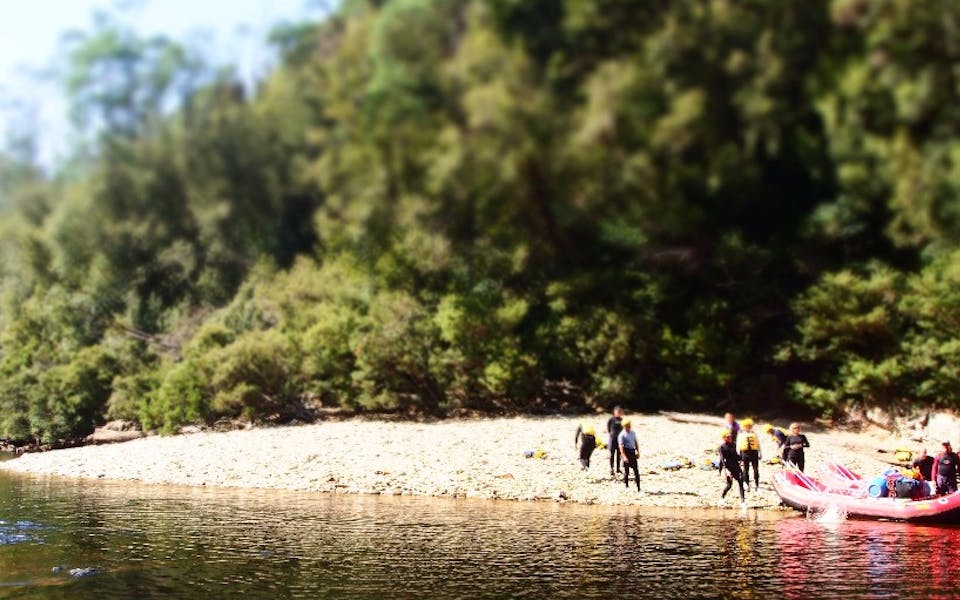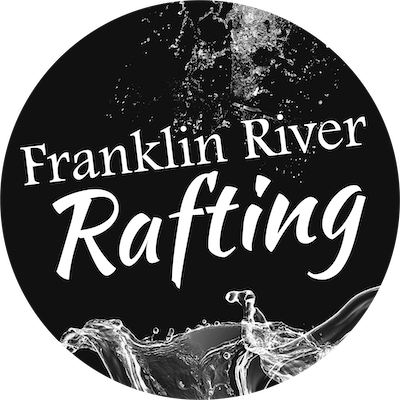What's the best water level to raft the Franklin?

LOW WATER, HIGH WATER...
The million-dollar question, what is best and when should I go?
The Franklin River is always one of the world's great adventures. Whether water levels are high and thumping or a mere trickle you will be journeying through an immense wilderness. There are no roads, shops or towns. It is up to you and your fellow adventurers to safely make it to the river's end.

Quick note
The Franklin River runs free. There are no dams and the rivers levels are dictated by the amount of rain received at any given time. A trip down the Franklin is as close as it gets to a "Source to Sea" adventure. You begin the trip on a tributary of the Franklin known as the Collingwood River. Flows here are often low and the distance to the confluence of the Franklin can be arduous. To get an easy run down this section one must be extremely lucky and receive rain shortly before the trip departs
Low Water
DRY, WARM, SUNSHINE AND HARD WORK. TEAM SPIRIT ESSENTIAL
Dry sunny days, nice, warm and long days on the river. Hard work and good team spirit is required, at this level everybody needs to work together. Expect 8+ hour long days, arriving into camp tired and satisfied with the days effort.
The journey begins with a baptism of fire, The 6km down the Collingwood a brutal slug best described as "What-Water Rafting". Every rapid requiring some arduous lifting and hauling only to slip into the next pool for a few minutes reprieve whilst paddling to the next set of rocks. It is here that you will be introduced to the "Franklin River Hump" this is the act of getting out of the raft and as a team dragging it 30cm's at a time downstream.
Fun Fact - On a low water Franklin trip the words "one, two and lift" will be uttered six thousand, five hundred and sixty nine times.
The good news, every day gets better. The pools become longer, some rapids shootable and the portages big and dramatic. Sunny days and warm weather mean you enjoy getting into the water. Swimming in the afternoons, washing off the days aches and pains. A lovely hearty meal awaits to be shared with your companions. As the days last rays of sunshine disappear over the hill your sleeping bag beckons. As your head hits the pillow you slip into instant slumber, a solid 10 hours rest will ensure you are ready for the next day of adventure.
These trips aren't easy, however the tremendous team work required makes them some of the most memorable and amazing trips down the Franklin River. In this wild part of the world you cannot change what you are given, only your attitude is in your control.
"Even though the water level of the river was mighty low it was a great trip..." Ronnie Sammut - excerpt from review on TripAdvisor 2013
PORTAGING THE CHURN - LOW WATER
Here is a little time lapse (above) of the portage at 'The Churn'. Getting around the major obstacles in the Great Ravine is always a challenge. Believe it or not this is one of those rare occasions where a high water level can result in more work.
This was taken from our trip with the boys and girls from Trek Tours Australia, what an awesome staff trip. Reckon those guys must have the best boss in Australia...
HIGH WATER
WET, COLD AND RAIN. OCCASIONALLY A TOUCH SCARY
With high water come it's own challenges. Generally rain, wind and cold conditions go hand in with the luxury of the wet stuff. In exchange you can expect plenty of fun rapids and almost no lifting and humping of the raft until you reach the Great Ravine.
If you happen to be part of the lucky 1% that manage to time your departure with rain within the previous 24 hours even the Collingwood becomes an easy 40 minute paddle. However in turn you will miss out on the hardship that bonds the average group.
The constant rain and cold weather bring with it a rainforest landscape like no other, the tress glistening whilst waterfalls spring from the rivers edge on every corner. Our days on the river are generally much shorter. Due to the increased flow we travel faster and often choose to continue through to camp for lunch. This allows you to get out of your wet gear and into dry clothes again.
Sometimes we can receive too much of a good thing and it becomes too dangerous to move on. Now is the time to sit it out and wait for the river level to subside again. Perhaps a few games of cards, a good book and some yarns with your fellow adventurers. All washed down with plenty of hot drinks and good food to keep our bellies satisfied. Life is good, everyone warm dry and snug under the tarpaulins. Sleep tight because when the journey continues it is going to be an exciting one.
Fun Fact - The main obstacle that halts our progress at high flows is The Great Ravine. When levels are too high it isn't possible to safely portage the rapids deemed too dangerous. Once progress continues it is usually possible to make up for lost time and link some days together. Worst case scenario, you may be a day or two delayed. We recommend travel insurance for these instances to cover any lost flights and/or accommodation.
"The rapids ranged from 'gentle fun' to 'holy cow' so there were plenty of thrills but only a single spill the whole time. The trip has plenty of adrenaline moments but safety is paramount. " Cynthia Wardle - excerpt from review on Google+ 2015
HIGH WATER THRILLS
Enjoy a little high water mash up taken from last March 2015. We received quite a bit of the wet stuff from above, fingers crossed this coming March will be a rainy one.
At these levels we spent some time in camp waiting for the levels to drop. We drank our weight in tea, ate ourselves silly and played cards for hours on end.
LOW, MEDIUM OR HIGH
HOW CAN I CHOOSE WHAT LEVEL IT WILL BE FOR MY TRIP ?
The answer is... You can't. However there are a few things that may increase the chances of one or the other.
SEASONS
Spring (Oct-Dec) and Autumn (Mar-April) generally provide high rain fall than the middle of summer (Jan-Feb).
That being said even this can vary from season to season.
RESEARCH
Check out the seasonal forecasts on the Bureau of Meteorology website.
Keep up to date with current levels on the river via the Hydro Tasmania Website.
RAIN DANCE
Get all your kit off and do a naked rain dance in the backyard. Please note we cannot be held liable if your neighbour decides to call the police.
CLIMATE AND WATER OUTLOOK
The Bureau of Meteorology website is an incredible resource, provided you have the time there is little you won't find here.
Since we are focusing on the river the Tasmanian Weather and Warnings is the page you'll need to concern yourself with.
Here is a link that will take you directly to the right page - Tasmanian Weather and Warnings
WHAT IS THE CURRENT RIVER LEVEL ?
If you would like to check out the flow that is currently travelling its way down the Franklin River you can check out the Hydro Tasmania website.
You'll need to use some mathematical know how and also navigate your self to this page - Franklin River : Flow and Rain
This will take you to a pdf and give you the flow in M/L per day, divide the total by 86.4 and you'll get a CUMEC read out. Cumec = Cubic Metres Per Second.
Here are some rough guidelines - for levels on the Franklin.
- 3 Cumecs = very low
- 12 Cumecs = happy days
- 200 Cumecs = Whoop Whoop, better stay in camp.
